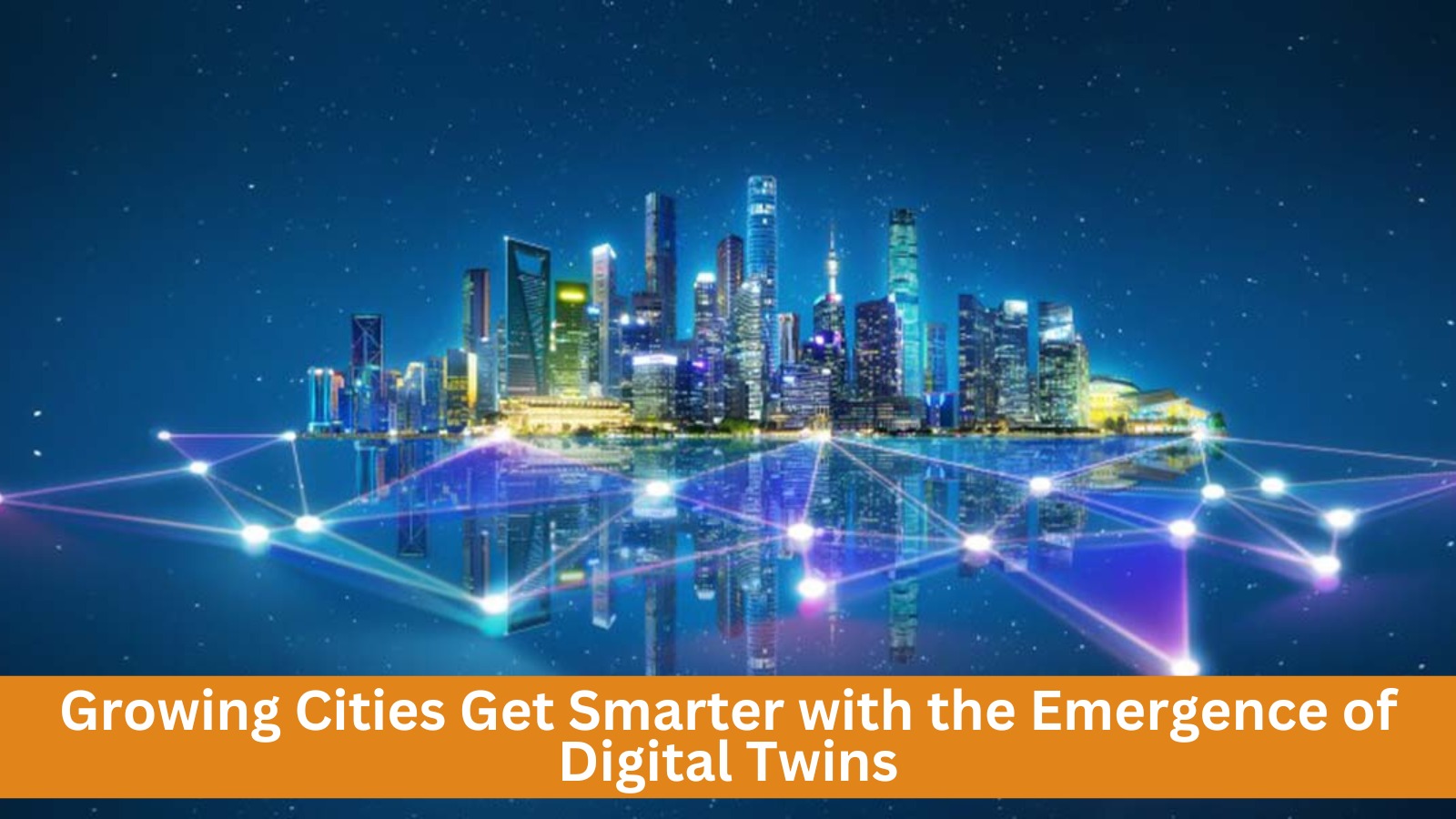Growing Cities Get Smarter with the Emergence of Digital Twins
Published on December 07, 2023
Digital twins have emerged as game-changers in the realm of government technology, both at the local and national levels.
These virtual representations faithfully mirror physical objects, like wind turbines by harnessing data from sensors strategically placed on the objects’ key functional areas.
These sensors continuously gather information about various performance metrics, such as environmental conditions, energy output, and temperature.
This data is then utilized to update and enhance the digital twin.
Orlando – a city in Florida, US- has taken a pioneering step in this field by creating a groundbreaking regional digital twin that covers an expansive 2000 square kilometres.
This cutting-edge digital twin incorporates real-time 3D content, making it even more impressive.
Furthermore, an online version of this remarkable tool is set to be launched soon, ensuring accessibility to a wider audience.
The implementation of this advanced technology promises to revolutionize how we interact with and optimize our physical surroundings for the betterment of society.
Predicting how certain plans will impact the region
The introduction of Orlando’s digital twin has opened up exciting possibilities for predicting the impact of various plans in the world.
This technology brings together diverse datasets, providing companies, local governments, and nonprofits with a unique visualization tool to assess the consequences of their initiatives.
Digital twins are instrumental in predicting the impact of plans on a region by:
● Providing data-driven insights
● Facilitating scenario testing
● Mitigating risks
● Offering real-time feedback
● Enabling multi-dimensional analysis
● And enhancing public engagement
As these technologies continue to evolve, their potential to support informed decision-making and sustainable development will only grow, benefiting both local and national government technology landscapes.
Since its grand unveiling in October 2022, the digital twin has been a centre of attention, engaging in nearly 100 demonstrations for executives, consultants, community partners, and organizations.
As time goes on, the functionality of the digital twin is only expected to improve.
The dream of achieving climate resiliency solutions, along with infrastructure planning, seems more attainable than ever before.
Digital twin technology is creating opportunities on a larger scale
The impact of digital twin technology is not limited to state and local government entities; it is transcending boundaries and creating vast opportunities at the federal level as well.
From battling wildfires to revolutionizing aircraft design for NASA, digital twin technology is proving its versatility and effectiveness on a grand scale.
The global digital twin market has been experiencing a remarkable surge, with an impressive compound annual growth rate (CAGR) of 40.1%.
Experts predict it will continue to soar, reaching an astounding $131.09 billion by the year 2030, according to the authoritative Strategic Market Research.
Notably, North America has emerged as a dominant player, securing a significant market share of over 35% back in 2021.
The applications of digital twin technology are vast and profound.
Imagine a future where city planners can virtually simulate and analyze the impact of various infrastructure projects before breaking ground.
Picture healthcare professionals using digital twin technologies to optimize patient care and treatment plans, leading to more effective and personalized medical services for entire communities.
Envision traffic management systems becoming highly efficient and responsive, easing congestion and enhancing the overall commuting experience for citizens.
Final thoughts
In my view, embracing digital twin technology and promoting citizen participation in smart city initiatives are vital steps towards building inclusive and responsive cities.
The future belongs to those who embrace innovation and prioritize the voices of their citizens.
Through collaboration and data-driven insights, we can shape smart cities that truly reflect the aspirations of their inhabitants, fostering sustainable growth and prosperity for all.
Digital twin technology empowers us to not only monitor cities more intuitively but also to create predictive models for the future.
However, it requires extensive data collection, establishing causation, and employing complex mathematical models and machine learning algorithms for accurate predictions.
So, let’s ask ourselves:
How can we leverage DT to empower citizens and make our cities better?
How can we harness the collective intelligence of our communities to create a brighter urban future?
The answers lie in embracing technology, nurturing collaboration, and placing citizens at the heart of our smart city endeavours.
About the Author
Mohammad J Sear is focused on bringing purpose to digital in government.
He has obtained his leadership training from the Harvard Kennedy School of Government, USA and holds an MBA from the University of Leicester, UK.
After a successful 12+ years career in the UK government during the premiership of three Prime Ministers Margaret Thatcher, John Major and Tony Blair, Mohammad moved to the private sector and has now for 20+ years been advising government organizations in the UK, Middle East, Australasia and South Asia on strategic challenges and digital transformation.
He is currently working for Ernst & Young (EY) and leading the Digital Government practice efforts across the Middle East and North Africa (MENA), and is also a Digital Government and Innovation lecturer at the Paris School of International Affairs, Sciences Po, France.
As a thought-leader some of the articles he has authored include: “Digital is great but exclusion isn’t – make data work for driving better digital inclusion” published in Harvard Business Review, “Holistic Digital Government” published in the MIT Technology Review, “Want To Make Citizens Happy – Put Experience First” published in Forbes Middle East.
More from Mohammad J Sear





